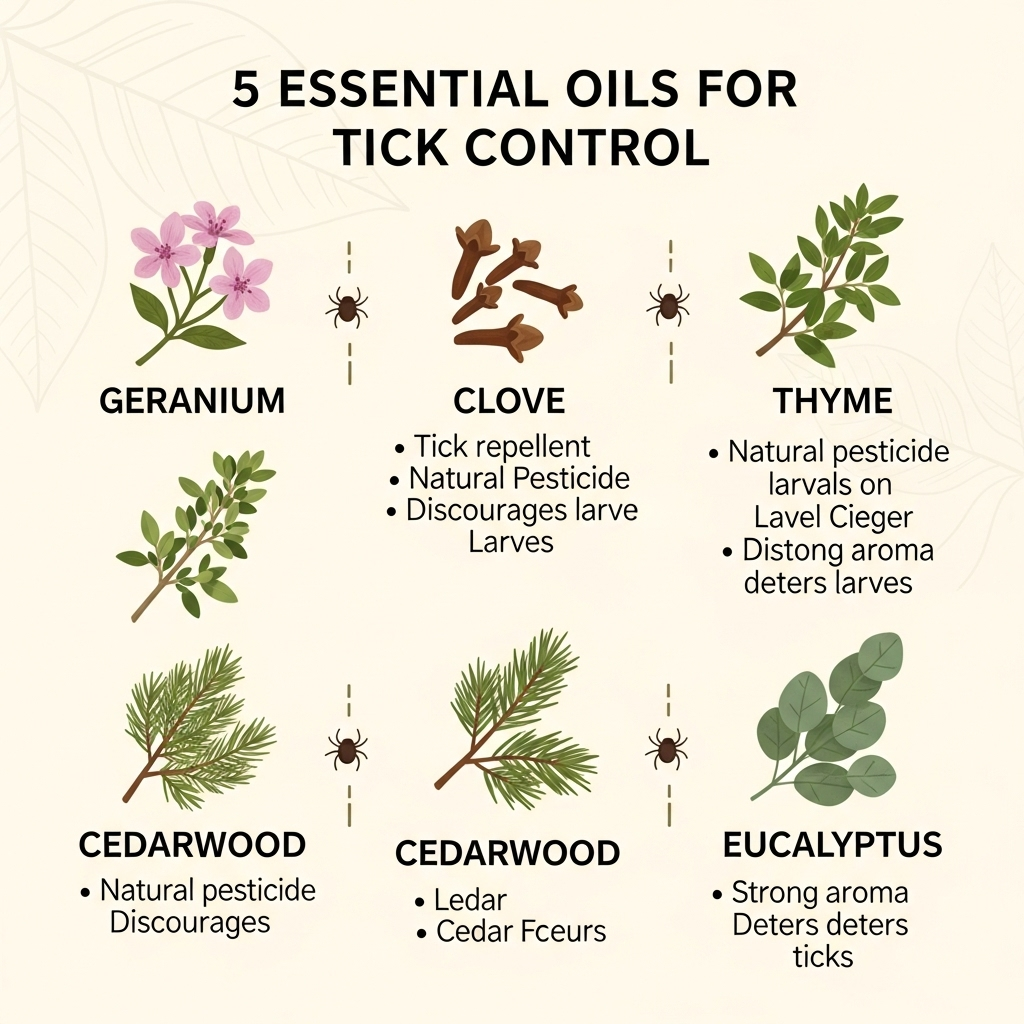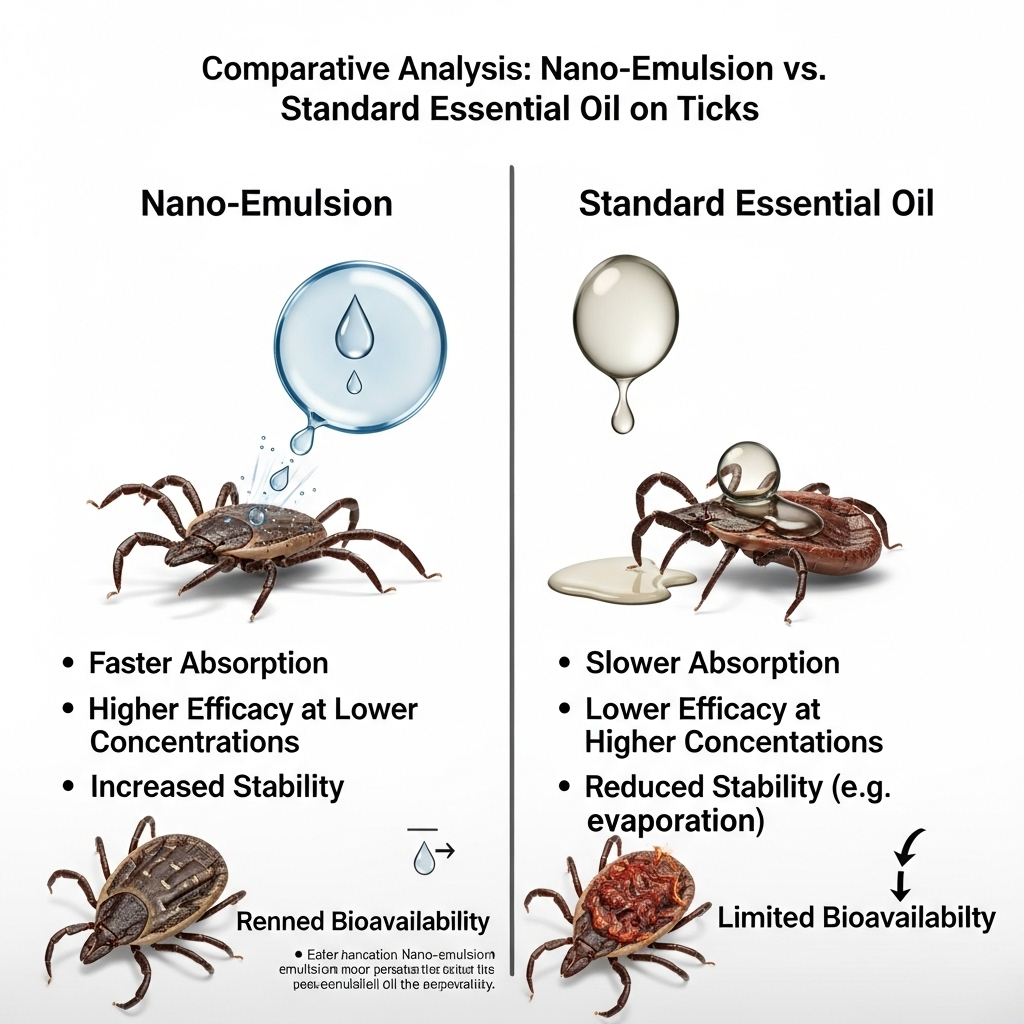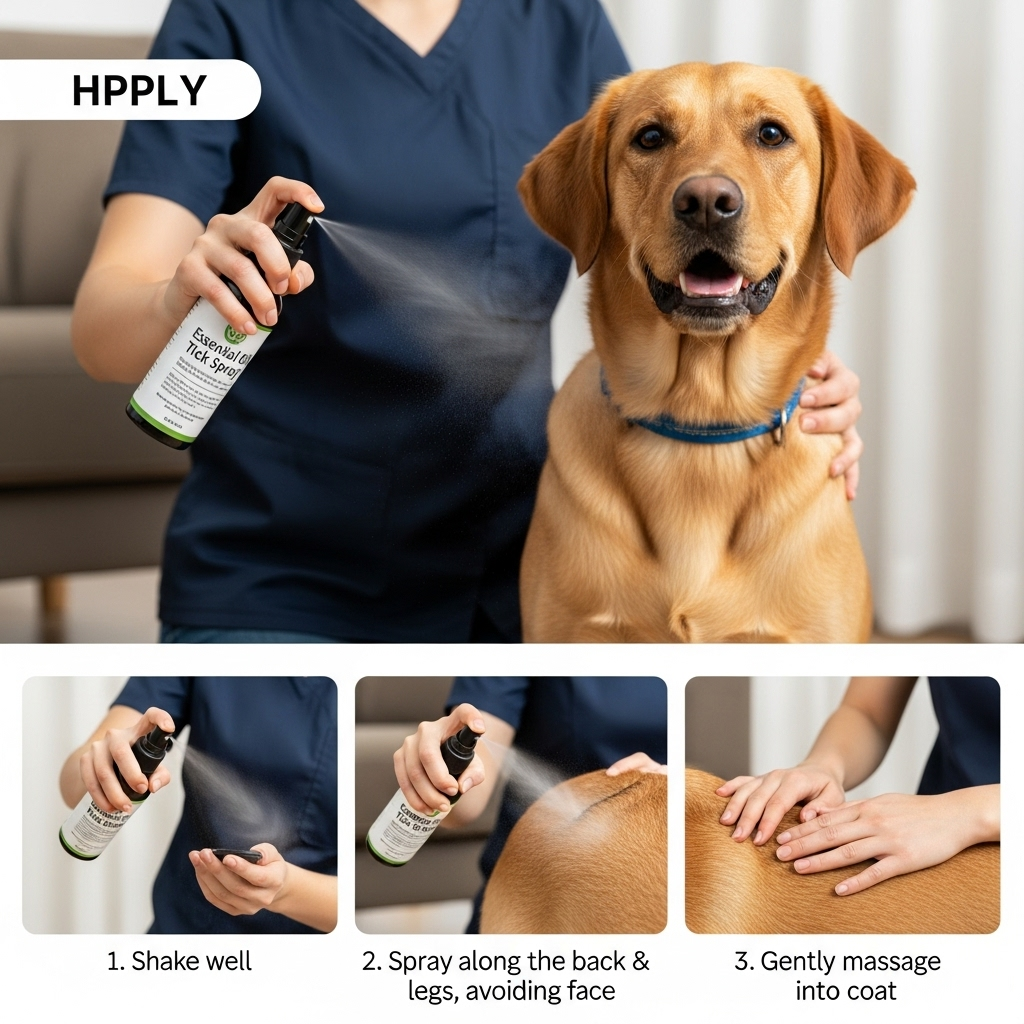Medical Disclaimer: Always consult your veterinarian before using essential oils on pets. Some oils can be toxic, especially to cats and small dogs.
Table of Contents
Introduction
Ticks are more than just gross—they can carry serious diseases like Lyme and Ehrlichiosis. If you’re a dog owner hoping to ditch harsh chemicals in favour of natural tick solutions, you might be wondering: can essential oils for ticks on dogs actually help? The short answer: yes, but with careful use and a few caveats. Let’s dig into which oils work, which to avoid, and how to use them safely.
Key Takeaways
- Top oils with proven tick-repelling effects include geranium, clove, thyme, cedarwood and citrus-derived eucalyptol oils.
- Use with care: Stick to a total EO content of 0.5–1% for leave-on products. Rinse-off shampoos can go up to 2%.
- Never use phenol-rich oils on cats. Cats lack the liver enzymes to safely break down many EO compounds.
- Essential oils can help, but they don’t replace prescription preventives. Think of them as a green addition to your tick-control toolkit.
Why Use Essential Oils for Ticks?
Chemical spot-ons and oral tick preventives remain the gold standard—but they’re not perfect. Some dog owners are concerned about side effects, environmental residue, or resistance in ticks like Rhipicephalus sanguineus and Ixodes scapularis. Enter essential oils: concentrated plant extracts that act as natural fumigants, neurotoxins, or cuticle disruptors for ticks.
EOs also degrade quickly, leaving fewer residues and environmental impacts. For eco-conscious pet parents, they offer a natural line of defence—especially when used alongside conventional methods. A comprehensive review by Ellse & Wall (2014) supports their use in veterinary ectoparasite control.

Which Essential Oils Actually Work Against Ticks?
Geranium Oil
Geranium oil (Pelargonium graveolens) showed remarkable efficacy in multiple lab studies. One 2017 trial found it completely disrupted adult tick orientation at just 0.1 mg/cm². It smells pleasant and is among the gentler oils for dog skin. A 2018 study by Goode et al. confirmed its repellent effect in dogs.
Best for: Repelling adult Ixodes ticks.
Caution: Not safe for cats.
Clove Oil (Eugenol)
Rich in eugenol, clove oil has both repellent and acaricidal (tick-killing) properties. Used in concentrations under 1%, it can deter or kill ticks in contact assays. Nano-formulations double its potency. See the 2024 study by Abdel-Ghany et al. for recent lab results.
Best for: High-contact sprays and blends with myrrh or thyme.
Caution: Avoid in cats and very small dogs.
Thyme & Cedarwood Oils
Thyme oil contains thymol, a potent phenolic compound. Cedarwood is rich in cedrol, which disrupts tick nervous systems. Both are used in repellents and collars.
Best for: Spray blends or EO-infused collars.
Caution: Always dilute to <1% in dogs.
Citrus & Eucalyptol Oils
Citrus oils (limonene-based) and eucalyptus-derived eucalyptol show variable efficacy, but remain popular for their aroma and insect-repelling profile.
Best for: Short-term repellents before outdoor activity.
Caution: Highly toxic to cats.
Myrrh, Patchouli & Nano-Formulations
Recent 2024 studies have spotlighted myrrh and patchouli oils, especially when delivered as nano-emulsions. These formulations increase potency while reducing required dose. Gonzaga et al. (2023) highlight their potential in field settings.
Best for: Lab-verified sprays or research-backed commercial products.

Safety First: Are Essential Oils Safe for Dogs and Cats?
EOs are not risk-free. Dogs generally tolerate diluted essential oils, but puppies and toy breeds are more sensitive. Cats, however, lack liver enzymes (UGT) needed to detoxify phenolic compounds, making them especially vulnerable.
A 2021 review by Štrbac et al. stressed the risks of EO toxicosis in cats. Genovese et al. (2012) documented emergency reactions in dogs and cats exposed to EO-containing flea products.
General safety guidelines:
- Never exceed 1% EO in a leave-on spray.
- Stick to 0.5% or less for facial application.
- Use 2% max in rinse-off shampoos.
- Test a small patch before full use.
Avoid completely on cats unless under strict veterinary guidance.
How to Use Essential Oils for Tick Prevention
DIY Tick Spray for Dogs
Simple recipe:
- 100 mL distilled water
- 0.5 mL total EO (e.g., geranium + cedarwood)
- 2 mL glycerol (humectant)
- 0.1 mL polysorbate-20 (emulsifier)
- Optional: 5 mL aloe vera juice
Shake before each use and spray lightly before walks. Avoid eyes, mouth and open skin.
Other Formulation Tips
- Carrier oils like fractionated coconut or grapeseed help dilute EOs safely.
- Nano-emulsions and microencapsulation offer longer-lasting protection but are harder to DIY.
- EO-infused collars offer slow release but need proper vet-guided formulation.

Pros & Cons of Essential Oils vs. Traditional Tick Products
| Factor | Essential Oils | Prescription Acaricides |
|---|---|---|
| Residue | Low | Moderate to high |
| Efficacy | Short-term | Long-lasting |
| Resistance Risk | Low | Moderate to high |
| Pet Safety | Needs care | Generally tested |
| Field Data | Limited | Robust |
Prevention Tips: How to Make Tick Season Safer
- Daily tick checks after walks.
- Keep grass trimmed and remove leaf litter.
- Apply EO spray before hikes.
- Use vet-approved tick preventives monthly.
- Rotate EO blends to slow resistance and maintain efficacy.
FAQs: Essential Oils for Ticks on Dogs
1. What’s the safest essential oil for dogs?
Geranium oil is effective and low-risk when diluted properly.
2. Are essential oils effective against deer ticks?
Some EOs like geraniol repel Ixodes scapularis in lab studies, but real-world data is limited. Koc et al. 2024 detail these results.
3. Can I use EOs alongside prescription tick meds?
Yes, and it may improve overall protection. Always consult your vet first.
4. Are EO tick sprays safe for puppies?
Not recommended under 12 weeks of age. Ask your vet before use.
5. Why are cats more sensitive to essential oils?
Cats lack glucuronyl transferase enzymes needed to safely metabolize many EO compounds.
Bottom Line: Where Essential Oils Fit in Tick Control
Essential oils offer promising short-term tick repellency, especially when using proven oils like geranium, clove, and cedarwood. Innovations like nano-emulsions are improving efficacy, but the short duration and safety concerns (especially in cats) mean EOs work best as part of an integrated plan, not a replacement for vet-prescribed preventives.
For dog owners aiming to lower chemical use without compromising tick control, essential oils for ticks on dogs—used wisely—can play a helpful supporting role.




